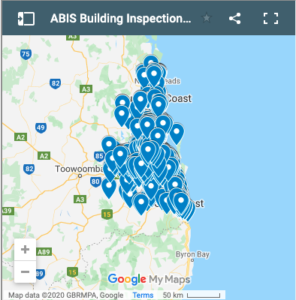Sub-floor Ventilation
A sub-floor is the structure and crawl space between the lowest floor and the ground. High moisture levels in these areas promote fungal decay and other timber pests such as termites.
All sub-floors and crawl spaces should be considered as having potential moisture and water problems. The most common causes for these problems are found on the outside of the house, usually from roof and surface water drainage.
Sub-floors will stay drier if the are built and maintained in the following manner:
- Yard Drainage – Slope soil around the house in such a way as to divert water away from the house
- Roof Drainage – Diverting all water from the roof and gutters away from the house. Don’t allow roof drainage to saturate the soil around the foundation of the house
- Gutter systems need regular cleaning and maintenance
- Tree limbs also need maintenance but this work needs to be done without damaging the trees. Tree limbs that overhang the roof and gutters make roof and gutter care much more difficult and contribute to drainage problems
- Gravity drainage is preferable to pumps. Pumps require a lot of maintenance, a constant supply of power and more frequent repairs
- Drainage System Maintenance – Maintain the roof, gutters, downpipes, and drain systems to assure proper operation
- In New Construction – Carefully seal the exterior of the foundation; install a quality perimeter drain system, and a separate drainage system for gutters and downpipes.
In addition, sub-floors will remain drier if the following precautions are observed:
- “Head room” A minimum clearance under beams of 300mm, and under floor joists of 400mm. Larger crawl spaces tend to remain drier; they allow for more air circulation and easier maintenance and repair.
- Storage in Crawl Spaces – Most crawl spaces are too small to be used for storage. In addition, the storing of materials in crawl spaces often reduces vitally needed air circulation and creates conducive conditions for rodent and other pest infestation.
- Venting – There is a considerable amount of dispute regarding the role of exterior venting in keeping crawl spaces dry. In some climates such vents may add moisture to crawl spaces by allowing entry of warm and moist exterior air into the crawl space and increasing moisture through condensation. Most building codes do call for screened crawl space vents.




